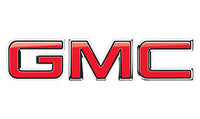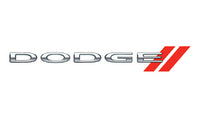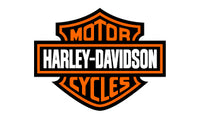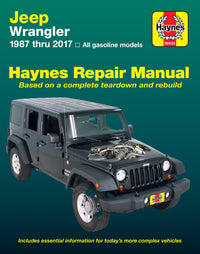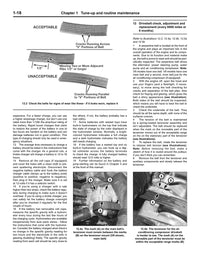Before 1967, automotive master cylinders were simple affairs, with just one hydraulic reservoir, and a single piston and seal. This distributed hydraulic fluid to each wheel when you stepped on the brakes, but had significant shortcomings. For example, if a wheel cylinder leaked or a line failed, all four brakes were negatively affected. Similarly, if that one seal inside the master cylinder went bad, you could end up with no brakes at all.
Several companies worked to develop a dual-cylinder brake system, which offered built-in redundancy. Wagner Electric, later acquired by Studebaker, was one of the first to succeed. And in 1962, Cadillac had a system that used a dual-circuit braking system with separate front and rear hydraulic lines, so that if one circuit had a leak, the other could still stop the car.
American Motors also offered the tandem(split) cylinder system as standard equipment early on. Their split diagonal system divided the brake circuits between one front wheel and one rear wheel on opposite sides of the vehicle. It was not a complete front to rear system but it was a step in the right direction.
Then in 1967, the Federal Government decreed that all vehicles should have a dual-brake master cylinder, with separate circuits in case of the failure of a line or other issue. The resulting dual circuit master cylinders typically have two separate chambers that separate the front and rear brake circuits, although some still are split diagonally.
This type of system prevents the total loss of braking action in the event of the system being compromised. The brakes still work even in the event of one seal in the master cylinder going bad, or a pressure leak in the system.
Either system will stop the vehicle with only one circuit operating, and prevent an accident, although stopping distances are much greater. Indeed more than 75% of your braking is done with the front wheels, so if the rear brakes fail you may not even notice.
How it Works
In essence, a master cylinder is a pump, and operation of the dual master cylinder is simple. When the brake pedal is depressed, force is applied through the push-rod to the master cylinder piston. The piston actually has two seals, and pushes in two chambers of the master cylinder, with a line to each circuit.
As the small master cylinder pistons are forced forward, brake fluid moves and hydraulic pressure builds. Hydraulic pressure forces the movement of larger pistons in the calipers or wheel cylinders, to stop the rotation of the wheels.
When the brake pedal is released, fluid is forced back through the lines into the master cylinder reservoir.
Vehicles that have disc brakes in the front and drum brakes at the rear require a proportioning valve, because it takes more force to clamp disc brakes than to apply the shoes of a drum. The motion of the wheel actually helps the shoes to grip the drum.
Symptoms of Master Cylinder Failure
A bad master cylinder is not something you need to replace right away, because even with the built-in redundancies it can still cause loss of braking. The most common symptom of a master cylinder gonging bad is a pedal that sinks to the floor when you're stopped. Another common clue that the master cylinder is bad or going bad is a leak or wet spot on the firewall. If it is going bad, often pumping the brakes can help return braking back to normal for the short term.
Like many other automotive systems, the most common cause of master cylinder failure can be attributed to:
- Normal wear
- Contamination of brake fluid
- Corrosion
The piston bore in the master cylinder will wear with time, especially with corrosion or water-contaminated fluid, and allow some fluid to leak past the seal. If the piston seal does not have a good tight fit, fluid will leak, and the system will not build up the high pressure it need to work properly.
Don't miss our new one-job manuals for fixing some of the most common problems on the most popular cars on the road today!
What is a Power Brake Booster?
The first power brake booster was invented in 1927 by Belgian engineer Albert Dewandre, and by 1928, Pierce-Arrow was the first car company that used a power booster system. The power booster uses the difference between engine vacuum, and atmospheric pressure, to help you press the brake pedal.
Because drum brake systems used in older cars took less effort to operate, it wasn't until the advent of the disc brake that it was necessary to use a power brake system. Although vacuum brake boosters were available from the 1930s on many cars, they didn’t become standard equipment until much later.
Power disc brake systems are more difficult to operate and take more force to depress the pedal. A large diaphragm inside the booster has negative pressure on one side, and when you press the pedal, atmospheric pressure it let into the other side. The beauty and simplicity of this system has kept it much the same for 80 years, and it even works for several stops if the engine were to die suddenly.
What is a Proportioning Valve?
The proportioning valve reduces the pressure to the rear brakes, because the rear brakes require less force than the front brakes. In race cars this is often adjustable by the driver while driving, to account for the change in weight as they burn off fuel and wear the brakes and tires. The amount of brake force that can be applied to a wheel without locking it depends on the amount of weight is on the wheel, which is why most pick-up trucks have a valve which adjusts rear braking force depending on payload.
Factory proportioning valves are often combination valves, incorporating the residual valve, metering valve, and pressure differential switch into them. They are typically mounted just below the master cylinder at the firewall.
What is a Residual Valve?
Vehicles that have disc brakes in the front and drum brakes at the rear require a residual valve to keep the brake drum shoes ready to be applied. Disc brakes are always in contact with the rotor, but with the drum brakes, they are slightly pulled away from the drums by the mechanical springs, and need 10 psi to counter the force of the springs. By having the rear brakes engage before the front brakes brakes, the vehicle has more stability while braking and is less prone to nose dive
Some older cars, trucks, and vans with the master cylinder under the floor, use a 2 psi residual valve to keep fluid from draining back out of the lines to the wheels. With a firewall-mounted master cylinder, gravity provides that residual pressure.
What is a Pressure Differential Switch?
As long as the pressure in both brake circuits is the same, the piston in the pressure differential switch will stay centered in its cylinder. But if one side develops a leak, the pressure will drop in that circuit, forcing the piston off-center and closing off the side that has failed.
This closes a switch, which turns on a dash warning light in the instrument panel of the car.



